Join More Than 50,000+ Subscribers and get latest camera news and rumors
NEW CAMERA VIDEOS ON YOUTUBE
|
By admin, on February 25th, 2025
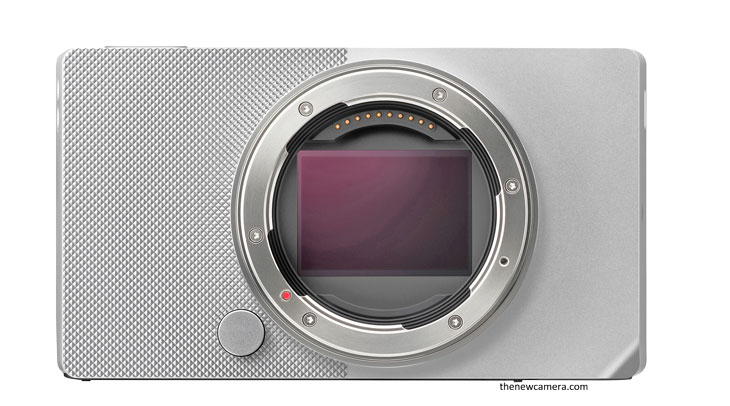
So we have now the Sigma BF camera, but after analyzing the overall core specifications and watching many online reviews, specifically those who have visited Japan by the invite of Sigma, and a lot of reviews have surfaced by the hands of many people out there, so the sum of all those things is mentioned below.
Innovative thing – the breakthrough technology that came along with the Sigma BF camera
The unibody design – the unibody design is a unique design specifically crafted by the engineers of Sigma, a single sheet of aluminum and an unbreakable structure, and with that structure, I am very confident that heat dissipation will not be a big problem for Sigma BF if the sensor, which is not using IBIS mechanism, has its heat sink attached to the body of the camera, then overheating will never be an issue in this camera.
The biggest advantage of this camera is its internal memory – 2330GB of SSD drive inside the camera, so you don’t have to worry about putting extra memory cards in the body. You just have to take out all your data through the USB port of the camera.
So, these two are the biggest advantages that came along with the Sigma BF camera – the new and unique design and the internal memory that we are getting inside the camera.
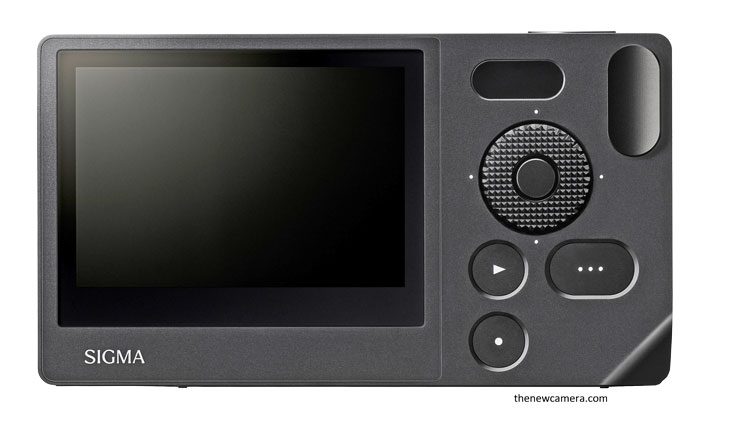
Now, the question is – for whom is this camera made?
So let us consider this camera is made for photographers only.
If you are a photographer, then you have to accept this camera with a very fresh mind since, of course, it doesn’t have extensive manual control over It, which is kind of a thing loved by a professional photographer. Made for beginners with minimum control and a completely new user interface.
Another thing that you will miss in the body design is the variable display screen that nowadays photographers love to have for compositional freedom. +1 more thing that you may miss as a photographer is the presence of an electronic viewfinder and, of course, no hot shoe is there.
Now, let’s dive into the internal core specifications of the camera. We have the same sensor that we have seen in the Panasonic S5II / S5IIX camera, but in S5II and S5IIX, with the presence of a 24-megapixel hybrid CMOS sensor, we also get sensor-shift image stabilization mechanism, which is absent inside the Sigma BF camera. We do not have any IBIS inside the body. Another thing that you will miss as a photographer is the presence of only and only electronic shutter – no mechanical shutter is available right now. One more thing that surprised me while reading the specifications of the camera is the maximum continuous shooting of the camera remains limited to 8 frames per second.
So, it does carry a lot of features, but again, it does have a lot of limitations too, so if you are a photographer, you have to consciously pick this camera with all the limitations it already has inside it.
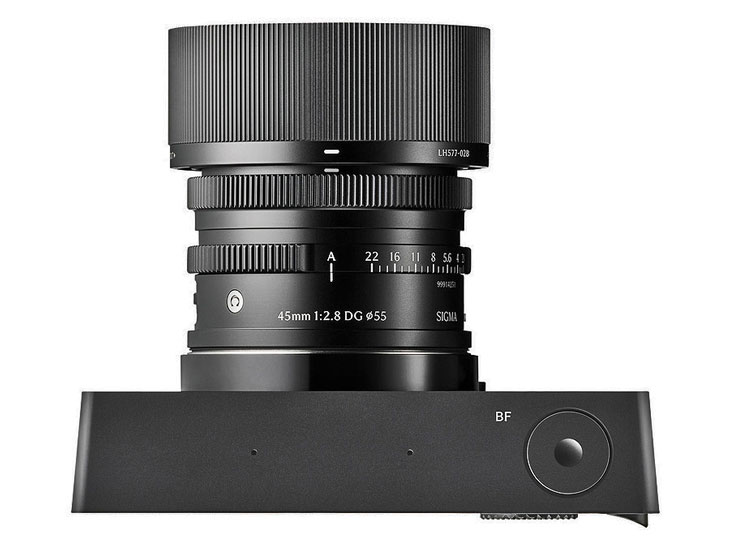
Obviously, this camera is not made for content creators
because it doesn’t carry any vari-angle display screen on the rear side, no content creator can create a video without framing themselves properly. The other two things that are also missing in this camera are the presence of headphone and microphone ports, which are generally present in all the cameras that we get in this price range and which are very essential.
Now finally, the latest analysis is that this camera is made for professional cinematographers since we are able to record 10-bit internal video in 4K 30fps mode. You also can record videos up to 6K resolution, so it is very advanced in terms of video recording capability, but again, we miss the basic ports that should be present in the body of the camera, like having at least a microphone input port. Major ports that a cinematographer may require are missing, and how can a professional cinematographer record high-quality audio when there is no option to do that?
Overall, this particular Sigma BF camera does come with breakthrough technology, a very innovative design, and interesting specifications
but some of the limitations make this camera limited to very specific photographers and video users. So, the camera is good, but due to its set of limitations, the camera is not able to impress a huge mass of photographers or content creators out there. It does need some improvement – maybe in the BF Mark II, we will have some basic upgrades and some more ports that will help us to utilize this camera properly.
By admin, on February 24th, 2025

Sigma today announced the BF camera. The BF camera features a unique aluminum body design, of course, without any grip, but it’s a very rare design. And, of course, rig makers like SmallRig are always ready with some innovative solutions. But apart from this very unique body design, Sigma approached the basics very differently. They have added a 230GB internal memory in this particular camera, so you can record your videos uninterruptedly and continuously for 2 hours, even in 6K with the highest possible settings.
On the specifications side, the camera features a full-frame CMOS sensor with a 24-megapixel resolution. Users can record 6K videos up to 30 frames per second in L-Log.
The camera features a hybrid autofocus sensor for fast autofocusing and an AF sensitivity range from -5 EV to 18 EV @ f/1.4. It has a base ISO of 100.
Maximum ISO sensitivity is expandable. ISO sensitivity goes from 100 to 102400. We have dual base ISO, meaning that in movie mode, you have the base ISO of 320. When you switch to Log, you get the base ISO of 1250, which is highly usable for professional cinematographers. Other than that, we also have an expandable base ISO that starts from 6, 12, 25, and 50 to extract the maximum dynamic range possible from the scene.

The camera has an electronic shutter, not a mechanical shutter. Selectable frame rates are available. The continuous shooting speed of the camera is a maximum of 8 frames per second. In a single burst, you can store up to 2000 JPEG frames and up to 350 RAW DNG frames inside your camera.
The body design is minimal, and the camera uses a lithium-ion battery pack of BP-81, which can capture 260 images on a single charge and support 60 minutes of continuous recording in 6K.
PRESS RELEASE
Announcing the “Radically Simple” Sigma BF camera
Ronkonkoma, New York – SIGMA Corporation of America, the US subsidiary of SIGMA Corporation (CEO: Kazuto Yamaki. Headquarters: Asao-ku, Kawasaki-shi, Kanagawa, Japan) is pleased to announce the Sigma BF, a 24-megapixel full-frame L-Mount camera. The Sigma BF presents an uncompromising new vision for the digital camera. Stripped to the essence but packed with power, innovative yet rooted in the origins of photography, it is designed to accompany you throughout your day and to capture the spontaneous beauty of everyday life. The BF balances performance with simplicity and returns the focus to what matters most: your photographs. The Sigma BF will retail for $1,999 and be available in April 2025.
A radically simple camera that evokes the essence of photography
A full-frame mirrorless camera offering an unprecedented intuitive shooting experience
Staying close to the photographer, the Sigma BF captures the beauty that lies hidden in everyday life, and becomes the catalyst to be aware of that beauty.
The BF focuses on the joy of photography that only a camera as a tool can provide. By simplifying and stripping away all excess elements, this full-frame mirrorless camera redefines the process of taking a photograph as a natural act.
The unique user interface, which provides a new sense of connection between the photographer and the camera in a true seamless unibody, is more intuitive than ever with its pressure-sensitive haptic buttons and dial. The high-definition expression of the approximately 24-megapixel full-frame sensor and the reliable dual autofocus system bring your vision to life.
Key features
Simple, clear, and completely new user interface
The user interface has a completely new information structure compared to conventional digital cameras, with the main shooting-related settings stored on the live view screen, secondary settings in the optional menu, and management functions and detailed settings in the system menu. Users can easily operate the shutter speed, aperture, ISO sensitivity, EV compensation and color mode, along with other important shooting-related elements at the touch of a finger. Combined with the auto setting, the functions of the general shooting mode dial are also covered.
Clear live view and status monitor
The default live view screen displays only the minimum necessary information and can be changed to display no information at all. Since the currently active setting is displayed on the status monitor, the users can concentrate solely on composition and the subject on the live view screen.
Minimal controls and haptics
All controls are integrated into just three buttons, one dial, the shutter release, and the power button. The BF is the first mirrorless camera* to incorporate haptics into its Dial, Center button, Option button, and Playback button, resulting in minimal physical wear. The buttons are always accurate and comfortable to press.
* As of February 2025, by Sigma.
Unibody structure
The BF is the first camera in history* to feature a true unibody, which boasts unprecedented rigidity. Each camera is carved from a single, solid block of aluminum over the course of seven hours. The reliable, comfortable weight of its seamless all-metal body harmonizes perfectly with any attached lens.
* As of February 2025, by Sigma.
Internal storage
The BF features 230 GB of internal memory, capable of storing more than 14,000 JPEG files, 4,300 uncompressed RAW images or 2.5 hours of video at the highest-quality setting, with the USB-C port offering fast charging and data-transfer speeds.
Various color modes
Thirteen different color modes are available to open up new avenues of creativity. The modes range from unique options like Teal and Orange, Powder Blue, and Warm Gold to creative yet versatile options such as Rich, and Calm.
Evolved autofocus
A hybrid autofocus system combining image phase detection and contrast detection utilizes state-of-the-art algorithms to capture subjects accurately and reliably. In addition to people, dogs and cats can be detected in the subject detection mode.
Video shooting (6K, L-Log)
The BF supports high-resolution 6K and L-Log recording, enabling video production that takes advantage of the wide dynamic range of a full-frame sensor.
Equipped with L-Mount
The L-Mount lens mount allows the camera to be used with a wide variety of interchangeable lenses for mirrorless cameras from Sigma as well as other L-Mount Alliance partners.
By admin, on February 22nd, 2025
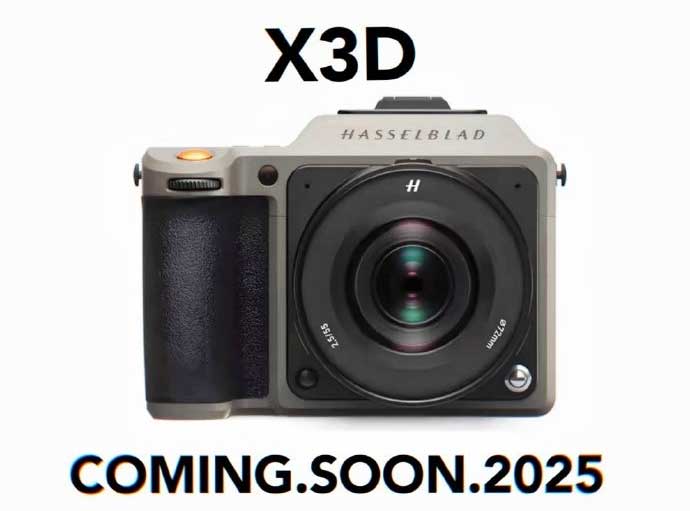
The new medium format camera X3D is about to arrive from Hasselblad, now how we came to know about it? It’s directly coming from Chinese sources. Initially, Hasselblad completed its FCC registration with the model code HB 722, registered on December 2024, and the confidentiality period is 180 days, which is around 6 months. As per the rumors, expect a new X3D medium format camera to arrive.
The real excitement is about what’s coming inside the new X3D camera. It will be using a 150-megapixel Sony medium format sensor or 250 MP. As usual, before the announcement, we generally get a lot of leaks related to the upcoming camera, including its specifications and images, and we will be posting it as soon as we get any.
Get LIVE RUMORS –> FACEBOOK | TWITTER (X) | INSTAGRAM to get live news + Hasselblad Rumors
By admin, on February 18th, 2025
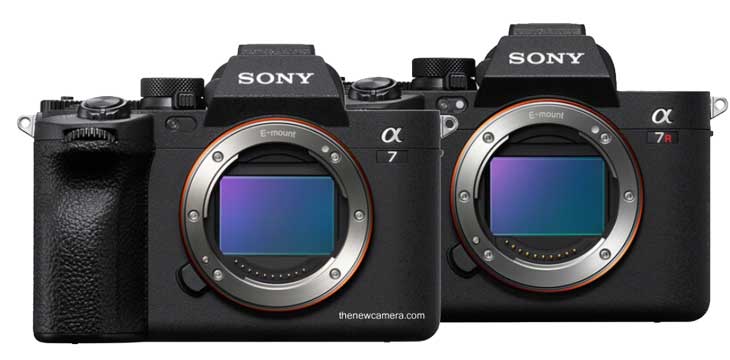
Its all coming from Bobby Tonelli And Matt Irwin PODcast
About Sony A7 V
Sony A7 V is expected to feature Same Resolution Sensor but FASTER readout speed,an AI autofocus chip, improved video capabilities (possibly 4K 120 or 6K), and (MAY BE )open gate functionality.
I am talking about this podcast because they are very, very accurate about camera predictions, and if you talk about Matt, he predicted the arrival of the Nikon Z Raptor camera 4 months ago, and now we have the Raptor from Nikon. This is not only about one prediction—Matt is generally very accurate about Nikon’s upcoming cameras, ofcourse he is deeply connected with Nikon.
Talking about his 2024 predictions related to Sony, they were mostly accurate. So now, both are talking in the podcast, which is summarized below, and you can see the main parts of the podcast as well.
Bob Tonelli said we will have the Sony A7 V camera with the same resolution sensor but a faster readout, which is able to record 4K 60fps. Later on, Matt asked if there is any possibility to have 6K open-gate recording or something similar to that what we have seen in the S5II and S5IIx, and then discussion goes on about possibilites. What we get straight from Bob Tonelli this time is that there is a high probability—if he is right—then the resolution is expected to remain the same, but we will have a stacked CMOS sensor like what we have seen recently in the Nikon Z6 III.
Summary of Video
Take a look at the set of other things discussed in that VIDEO
Camera Technology Advancements
RED cameras now support Nikon Z mount lenses via firmware update, offering customizable focus speed, programmable buttons, and accurate iris control on Komodo X and V-Raptor models.
Viltrox’s 135mm f/1.8 LAB lens, priced 50% less than competitors, delivers exceptional image quality resolving up to 60-50 megapixels with no chromatic aberration.
RED’s $1,500 lens mount upgrade program allows existing Komodo X and V-Raptor owners to switch to Z mount, retrofitting most models except the original Komodo.
Upcoming Cameras
Sony A7 V is expected to feature the Same Resolution Sensor but FASTER readout speed,an AI autofocus chip, improved video capabilities (possibly 4K 120 or 6K), and (maybe)open gate functionality.
Sony A7R VI is expected to arrive in Q4 of 2025, But he didn’t discuss about the resolution of the upcoming camera A7R 6 camera.
Market Dynamics and Competition
Viltrox’s upcoming 35mm f/1.2 LAB and 85mm f/1.2 LAB lenses, combined with RED Komodo X or A9 III, offer a budget-friendly filmmaking kit with fast, accurate autofocus.
RED’s Z mount integration revitalizes the Komodo X, providing a competitive 6K option against Sony A9 III at a similar price point.
🔬LAB lenses challenge native manufacturers by offering high build quality and features at lower prices, potentially forcing them to improve quality and pricing.
Niche Market Innovations
Leica’s rumored digital EVF M camera could attract younger audiences and aid older users with declining eyesight, while maintaining the M series design ethos for their 100th anniversary in 2025.
8 LAB lens offers firmware updates via phone app and Bluetooth, enabling improved performance and support beyond traditional desktop or camera system methods.
Fujifilm’s rumored GFX100 compact camera could succeed if it offers 100MP resolution in a portable body with a fixed lens, similar to the popular GFX50R rangefinder.

Source Matt Irwin Photography YT channel
ALso See – Sony Upcoming Cameras 2025
Support us – Use or affiliate link Amazon.com | B&H Store | Adorama.com for the next purchase u make – it helps us 🙂
Follow us on our social pages FACEBOOK | TWITTER | INSTAGRAM, If you have time –>see more Sony Alpha Rumor
By admin, on February 15th, 2025
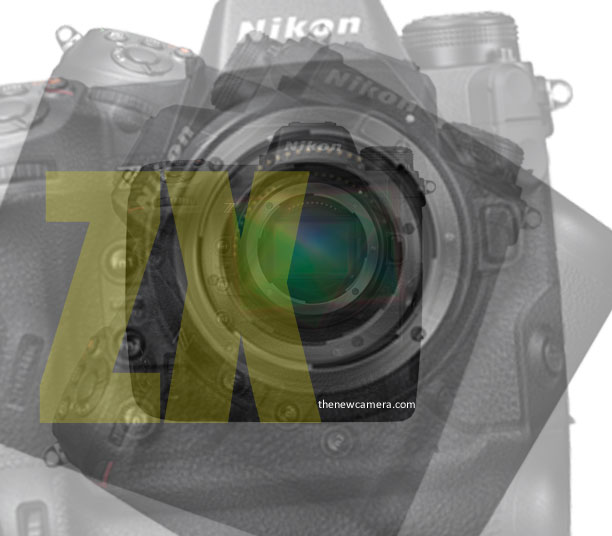
Nikon has working flagship mirrorless prototypes with Global sensors. Right now, we have very limited information since they didn’t exist in the handling experience of any professional photographer. The Early [box style] prototypes are very much restricted to lab environments. The source said the project name is ZX (don’t consider it an official name). When we asked about the arrival date and competitors, the camera is a direct competitor of the Canon R3 or Sony A9 Mark III. The expected arrival timeline points towards Q4 of 2026.
The source also added the camera is scheduled to be sent for testing to 50+ pro-Nikon photographers worldwide in Q1 of 2026, so from the first quarter of 2026, the rumor mill will start getting channelized information related to the Nikon ZX.
Follow us on our social pages FACEBOOK | TWITTER | INSTAGRAM to get live Camera News + Nikon Rumors 24X7.
TO SHARE RUMORS use this mail.me service or contact me via thenewcamera@gmail.com. Thanks!
By admin, on February 13th, 2025
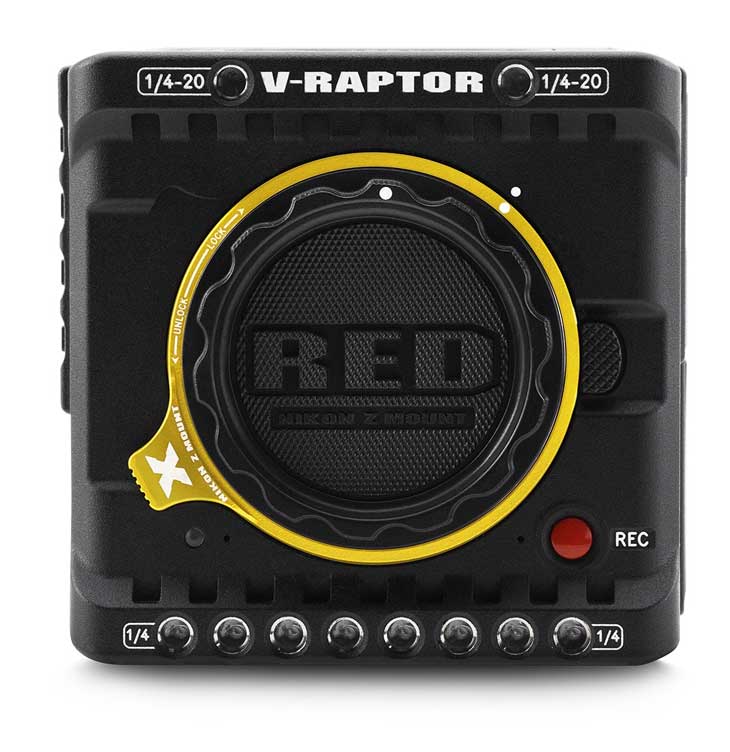
Today, the Z Cinema camera was officially announced. As we all know, RED Digital Cinema is now a subsidiary brand of Nikon. They have modified and relaunched the V-RAPTOR with a Z Mount and the KOMODO with a Z Mount.
We were the first ones to talk about the Z KOMODO [read our expectation article], and just a few months later, we received information about the RAPTOR. The context was that they were working on both series one after the other, and finally, they announced them today.
The new RAPTOR and KOMODO with the Z Mount feature inherit all the goodness of the Z Mount system. This means the autofocus performance has also been integrated into these cameras. So if you are using the recently announced Z Cinema lenses or Nikon Z Mount system lenses, there should be no problem. As we all know, the RAPTOR camera offers 20+ stops of dynamic range, and using it with improved autofocus lenses will be a game changer in the field of cinematography.
support thenewcamera.com get RED digital camera units and upgrade packs from our affiliates B&H Store and Adorama.com
RED DIGITAL CINEMA’S V-RAPTOR [X] AND KOMODO-X CAMERA SYSTEMS EXPAND CAPABILITIES WITH POWERFUL NIKON Z MOUNT
FOOTHILL RANCH, Calif. (Feb. 12, 2025 at 8p.m. PACIFIC TIME)—RED DIGITAL CINEMA® announced today that its groundbreaking V-RAPTOR [X] and KOMODO-X camera systems will also now be available with Nikon’s premier Z Mount, providing filmmakers with ultimate flexibility in lens choice and a complete capture solution from lens to sensor to codec.
“This marks the beginning of RED and Nikon’s collaborative products and it is the exciting first step in a new Z Cinema Series,” said RED Digital Cinema CEO Keiji Oishi. “By integrating the Z Mount, RED is providing more lens choices than ever before, empowering filmmakers with greater artistic flexibility. This development grants filmmakers the versatility of Nikon’s innovative Z lineup and PL options, as well as access to F Mount glass and many popular vintage lenses.”
With a shallower flange depth and a wider diameter, the Nikon Z Mount enables lens designs with higher sharpness and superior aberration control. The Z lenses can deliver unrivaled low-light performance and edge-to-edge detail as well as autofocus performance on both the V-RAPTOR [X] and KOMODO-X cameras.
Key Features, Pricing and Availability
RED’s V-RAPTOR [X] Z MOUNT, recognized for its unmatched low-light performance, dynamic range, resolution, high frame rates, and industry-leading 8K VV global shutter large format sensor, is available for a suggested retail price of $29,995.
RED’s KOMODO-X Z MOUNT features a 6K S35 global shutter sensor and frame rates at 6K 80P and 4K 120P, all in a form factor measuring only 4x4x5 inches and 2.6 lbs. The KOMODO-X Z MOUNT is available for a suggested retail price of $6,995.RED is also announcing all-new Z to PL Adapter Packs, which provide a robust PL mount solution and added flexibility for V-RAPTOR [X] Z MOUNT and KOMODO-X Z MOUNT shooters. Currently, there are four different Z to PL Adapter Pack options available, with shipments starting in spring 2025:
| Z to PL Adapter Pack Options |
Suggested Retail Price |
| RED V-RAPTOR Z to PL Adapter Pack |
$1,500 |
| RED V-RAPTOR Z to PL with Electronic ND Adapter Pack |
$3,500 |
| RED KOMODO Z to PL Adapter Pack |
$1,500 |
| RED KOMODO Z to PL with Electronic ND Adapter Pack |
$3,500 |
Both the RF and the all-new Z mount versions of the V-RAPTOR [X] and KOMODO-X cameras, and Z to PL adapter packs are available now on RED.com or through RED Premium Dealers.
RF Mount Transition
Filmmakers now also have the option to convert their RF mount versions of the V-RAPTOR [X] and KOMODO-X cameras to the all-new Z Mount systems. This transition costs $1,695 for the V-RAPTOR [X] and $1,595 for the KOMODO-X.
Trade-In Program
RED is excited to announce the return of its trade-in program, now available for the latest generation of RED cameras, including the new Z Mount models. Customers can trade in their existing RED DSMC, RAVEN, SCARLET-W, DSMC2, or RANGER cameras and receive a credit towards the purchase of a new, eligible RED V-RAPTOR XL [X] Pack or RED V-RAPTOR Pack [X] Pack with either the new Z Mount or RF Mount. For more information on the trade-in process and eligibility, please visit RED.com.
“We are committed to providing filmmakers with limitless possibilities for realizing their desired vision, and the fusion of RED and Nikon’s robust technologies and expertise will generate even more advanced tools, enhancing our filmmaking community’s creative capabilities,” added Oishi.
For more information on the V-RAPTOR [X] and KOMODO-X Z MOUNT camera systems, visit RED.com or RED Premium Dealers. Filmmakers can also visit the RED Studios Hollywood store location or any one of the RED Premium Dealers across the globe to schedule a demo and learn more about the products.
Follow us on our social pages FACEBOOK | TWITTER | INSTAGRAM to get live Camera News + Nikon Rumors 24X7.
By admin, on February 12th, 2025

So, that’s the teaser TTartisan has uploaded to its page. They are making very bold claims about their upcoming product on 27 February at the CP+ Show in Yokohama, Japan.
And the level of excitement they have is just amazing, you can see their Teaser text, a hypothetical chat that is full of excitement and no logic behind that 🙂 , that sounds fascinating and at the very same time it excites us too what coming next from these guys
Some rumors also state that they are about to announce their first Mirrorless Camera, is it is true then it’s a piece of very good news. Once they have started something other Chinese third-party lens makers will also follow soon, and after a while, we have a huge range of budget mirrorless camera options…. just a thought
Btw, we have to wait, and see what coming up Next from TTartisan at Yokohama on Feb 27, before that if we get any new updates about upcoming TTartisan cameras and lenses we will post an update soon.
Follow us on our social pages FACEBOOK | TWITTER | INSTAGRAM to get live Camera News
|
KEEP THIS BLOG ALIVE - Support New Camera Buy Canon Lenses, Buy Music CD or Digital Camera at amazon it helps this site, and you do not pay anything extra, it is just a way to help support this site.

|














